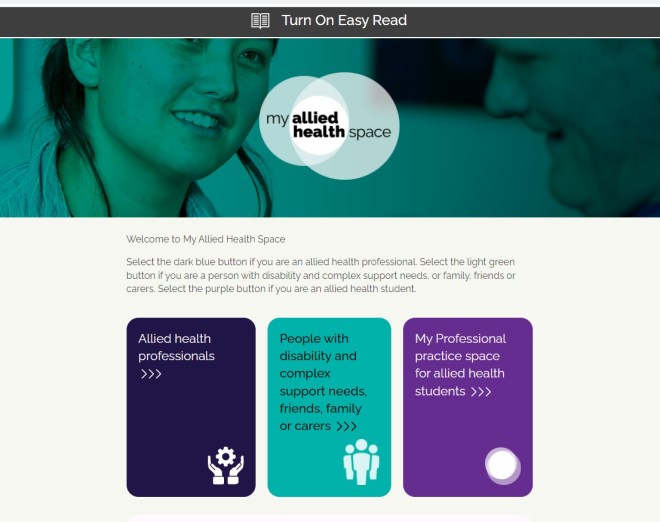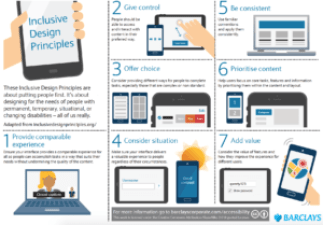 Accessibility and inclusion begins with procurement for any project. Often a scope of works is done by a non-expert to get the expert. But if the scope isn’t targeted correctly, the consultants are committed to sticking to the scope in the contract. So, the consultants are “doing the thing right” but not necessarily “doing the right thing” for the intended outcome. Consequently, staff involved in procurement activities need to understand access and inclusion basics. That means co-designing of the scope of works to include accessibility requirements.
Accessibility and inclusion begins with procurement for any project. Often a scope of works is done by a non-expert to get the expert. But if the scope isn’t targeted correctly, the consultants are committed to sticking to the scope in the contract. So, the consultants are “doing the thing right” but not necessarily “doing the right thing” for the intended outcome. Consequently, staff involved in procurement activities need to understand access and inclusion basics. That means co-designing of the scope of works to include accessibility requirements.
The G20 Global Smart Cities Alliance has a webinar and a model policy on their website about ICT Accessibility procurement. It states:
“Procurement policies are a critical lever in increasing accessibility. They set out the expectation, standards and criteria for how goods and services will be purchased, and through this the city can ensure the acquisition of universal designed products and services to safeguard the equitable development and participation of all.”
A procurement policy or code of conduct can:
-
-
- clearly document and ensure compliance with national legislation on accessibility and procurement, or
- define a clear approach for ensuring inclusive and accessible services that demonstrates alignment with globally recognized standards, even if national legislation does not exist.
-
While the focus of the advice is on ICT procurement, the principles are applicable to other types of procurement.
Model Policy
The model policy set out on this website looks very wordy and not an easy read. It’s aimed at city planners and policy makers in the context of smart cities. However, it does set out processes for tendering and contract management. It also includes a section on training, awareness and capacity building for all stakeholders.
The model policy is worded in policy-speak so that cities and local government can copy and paste sections. The website has various Standards in an annexe and includes Definitions and policy references.
The references include the UK Government policy and guide on accessible technology, and another from Chicago. Also included is the G3ict discussion guide for accessibility in public sector procurement.
The model policy is available in English, Spanish and Japanese. A five minute video with James Thurston explains.
Karen Tamley, “The adoption of a policy like this is going really help your city to make sure that accessibility is part of your DNA”.







 Citizen action has never been more important and much of this is done online and through social media. This is due to the ease of technology, a pandemic and plain economics. Consequently, it’s important to make online spaces accessible for everyone.
Citizen action has never been more important and much of this is done online and through social media. This is due to the ease of technology, a pandemic and plain economics. Consequently, it’s important to make online spaces accessible for everyone.  It is often thought that economic arguments will win the day if social justice arguments are ignored. This may be partially true if these arguments are allowed to be heard. “
It is often thought that economic arguments will win the day if social justice arguments are ignored. This may be partially true if these arguments are allowed to be heard. “ The latest
The latest 


 When you are in a rush it’s easy to leave out the description of the image in the alt-text box – but should you?. Alt-text is a description of an image that’s shown to people, who for some reason, can’t see the image. Among other things, alt-texts help:
When you are in a rush it’s easy to leave out the description of the image in the alt-text box – but should you?. Alt-text is a description of an image that’s shown to people, who for some reason, can’t see the image. Among other things, alt-texts help: Colour vision deficiency or colour blindness affects around 10 per cent of the population. But each person varies in what colours they can see, which is why it is not “colour blindness”. So what colours are best if you want all readers to enjoy colours on your website?
Colour vision deficiency or colour blindness affects around 10 per cent of the population. But each person varies in what colours they can see, which is why it is not “colour blindness”. So what colours are best if you want all readers to enjoy colours on your website? It’s one thing to talk about colour blindness, but it is quite another to see what it looks like to the 6-10 per cent of the population that have colour vision deficiency.
It’s one thing to talk about colour blindness, but it is quite another to see what it looks like to the 6-10 per cent of the population that have colour vision deficiency. 

 When choosing a web developer to update your site, don’t assume they know all about accessibility. The guidelines for web accessibility are often treated like tacked on ramps to a building. That is, something you think of after you’ve done the design. To ensure accessibility of your site, it pays to know how web design decisions are made. And you don’t need to be a tech person.
When choosing a web developer to update your site, don’t assume they know all about accessibility. The guidelines for web accessibility are often treated like tacked on ramps to a building. That is, something you think of after you’ve done the design. To ensure accessibility of your site, it pays to know how web design decisions are made. And you don’t need to be a tech person. The Centre for Excellence in Universal Design in Ireland has a comprehensive
The Centre for Excellence in Universal Design in Ireland has a comprehensive